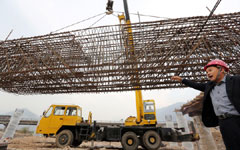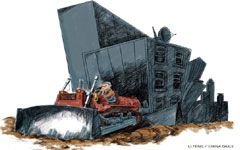There won't be one general business crisis in China in 2014. There will be many - all local ones.
Some of the local crises will be bad - as some of them already are. But collectively, they will help China create a new field of competition, in which local governments will have to try to differentiate themselves from one another to win the game of development.
|
 |
|
Regions continue to rely on capital investment for GDP |
|
 |
At provincial and city levels, few officials have learned to do things differently. They didn't need to. Easy credit was available to sustain the whole country's GDP when the US and eurozone were in financial crisis.
But now, as economists have pointed out very clearly, the old development model is becoming a cul-de-sac.
That is why, one by one, smaller cities are finding it difficult to sell the housing units they have built in recent years. The towns with the most new houses and least new industry are the ones to get hurt first.
The Chinese business media has reported the divergence in housing prices between large cities (called first- and second-tier cities) and all other cities.
Even for Beijing, where the population is being continuously fed by an influx of migrants from all over the country, housing prices are far from even from one district to another. In the districts where there are few universities, fewer business centers and fewer good roads and subway lines, housing prices can be only one-third of those in Shangdi, where many of the country's largest IT companies are based.
The growing divergence in housing prices is a reflection of the hard times that many local governments are going through.
Continuously rising housing prices in cities such as Beijing and Shanghai are only possible because of their ability to host enough outside investors and migrant workers.
